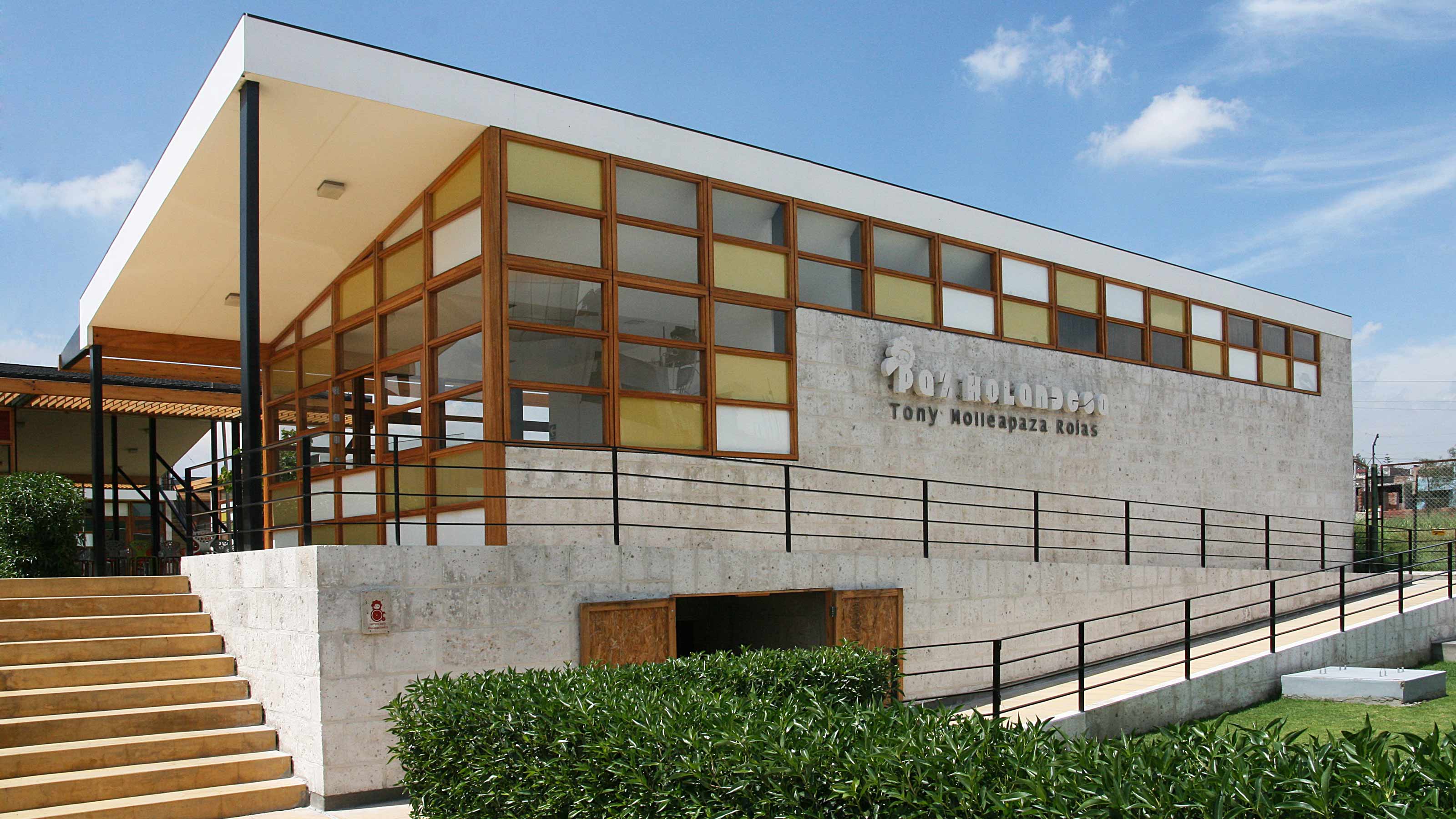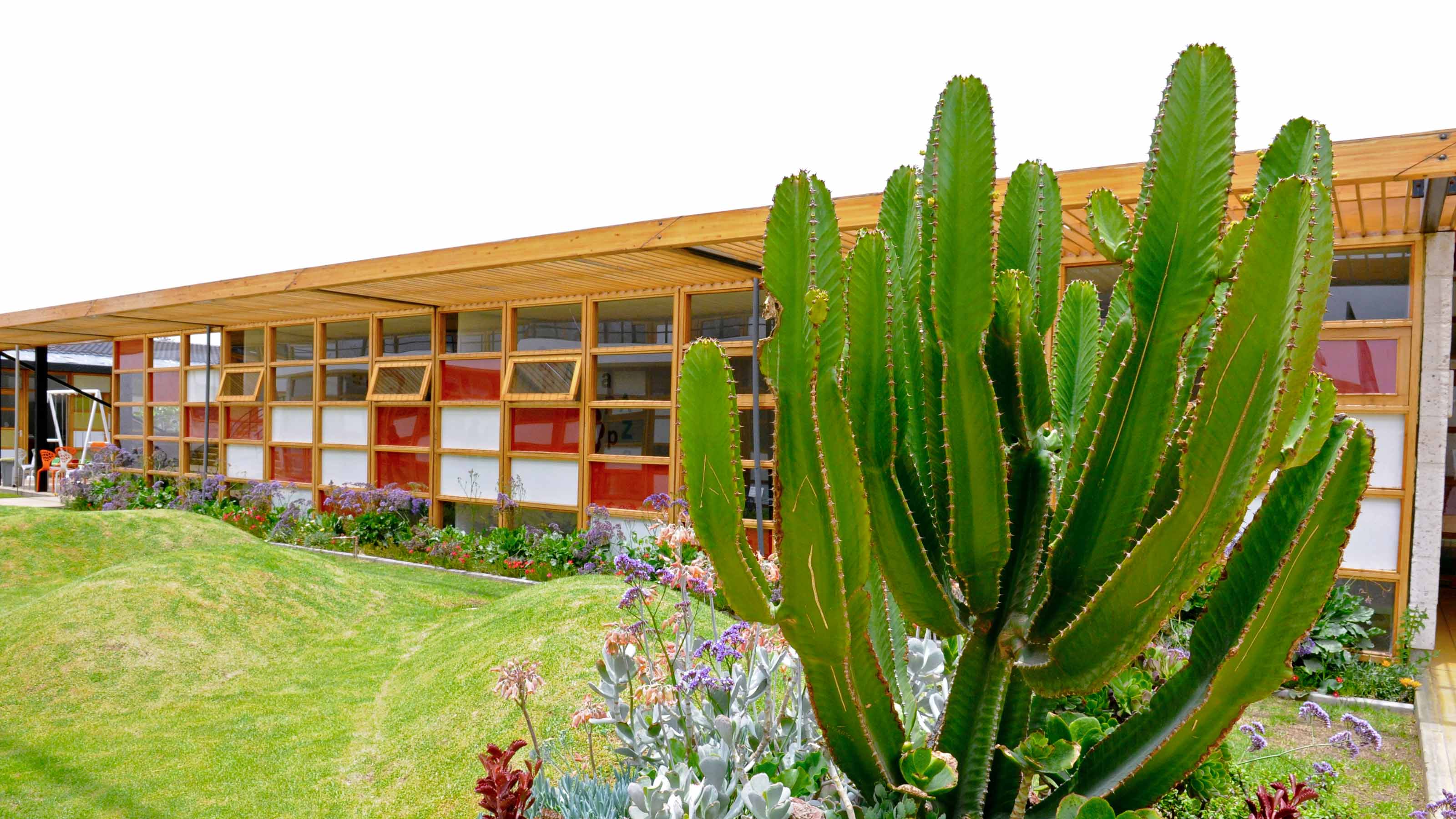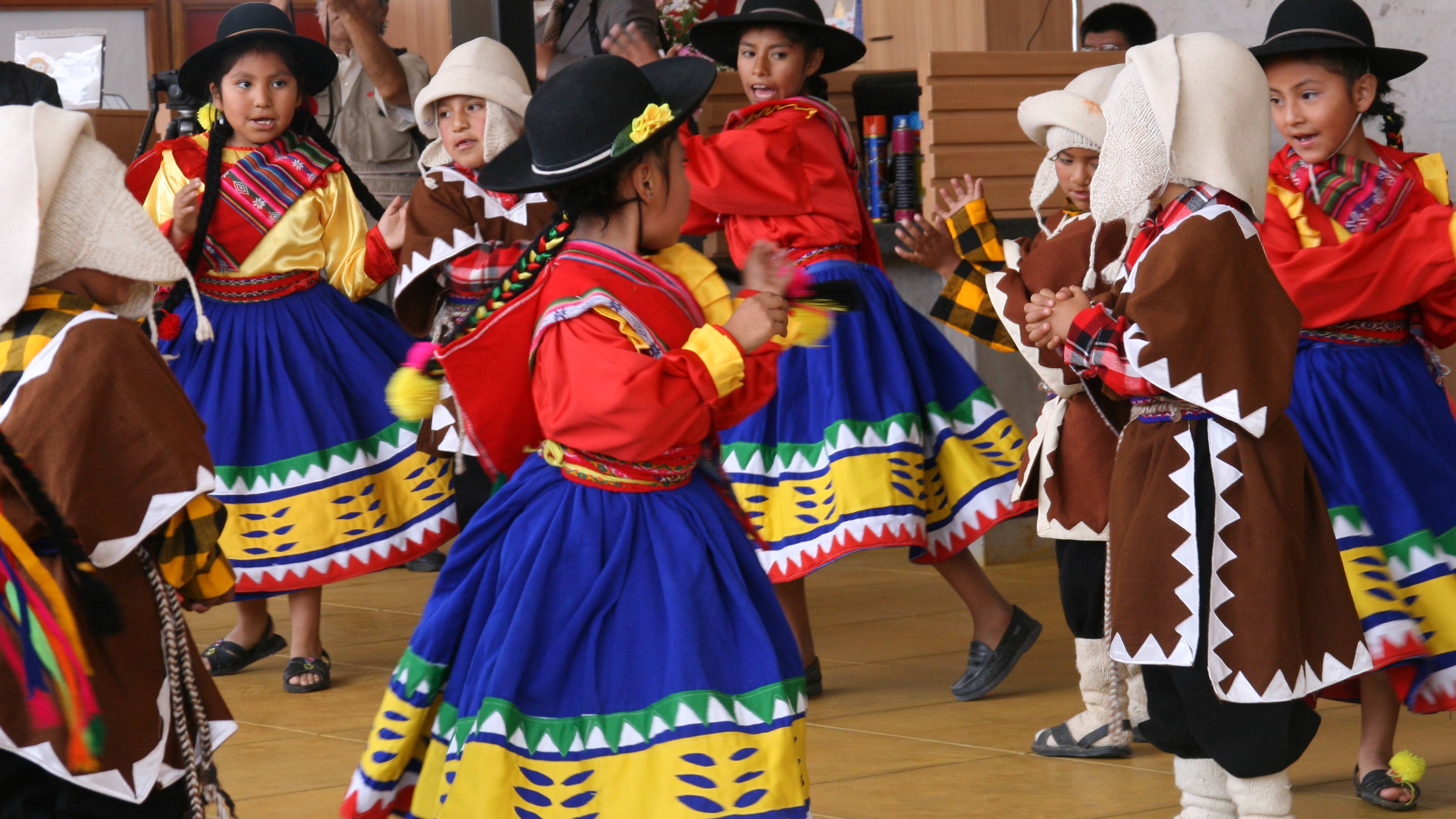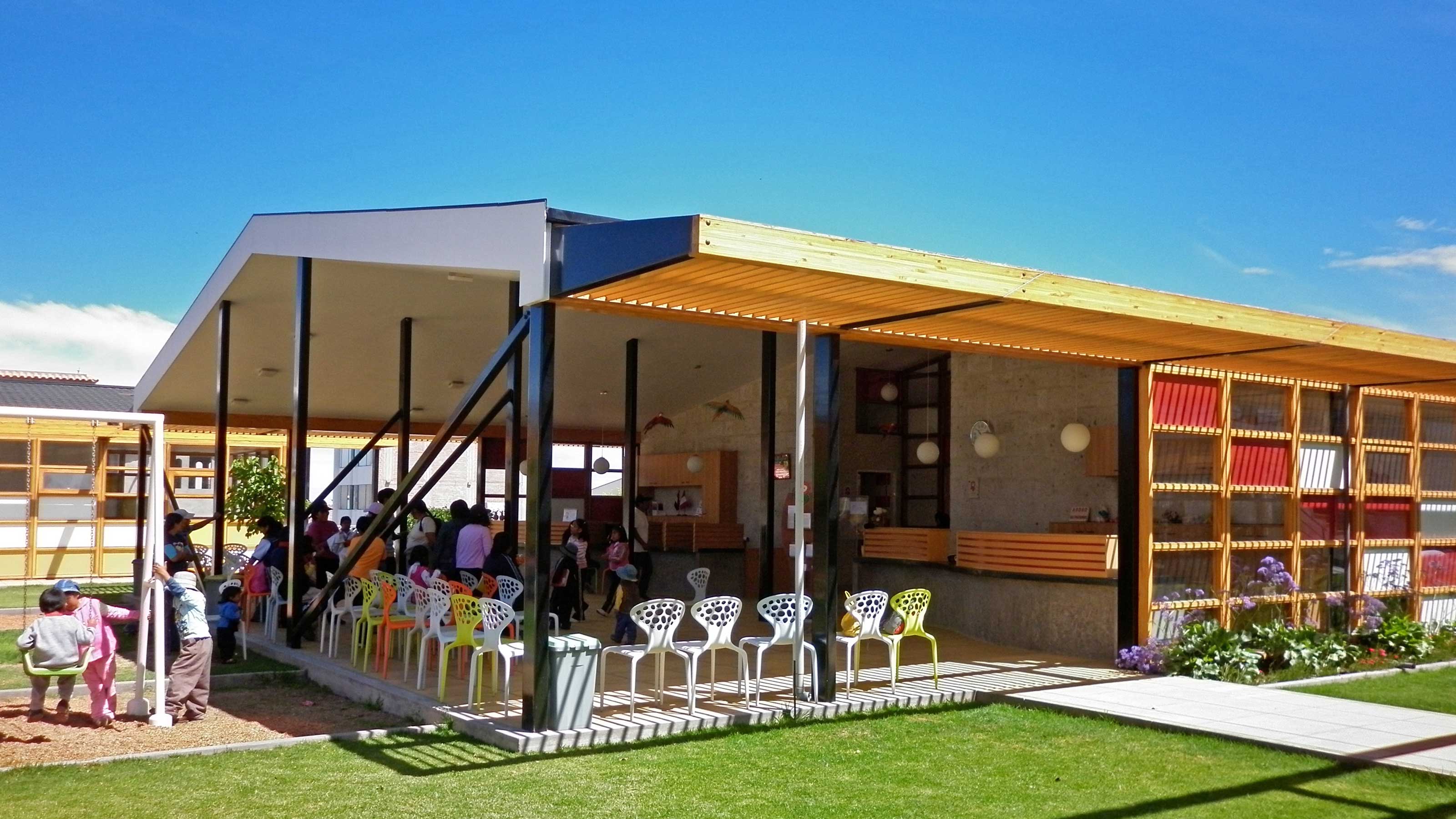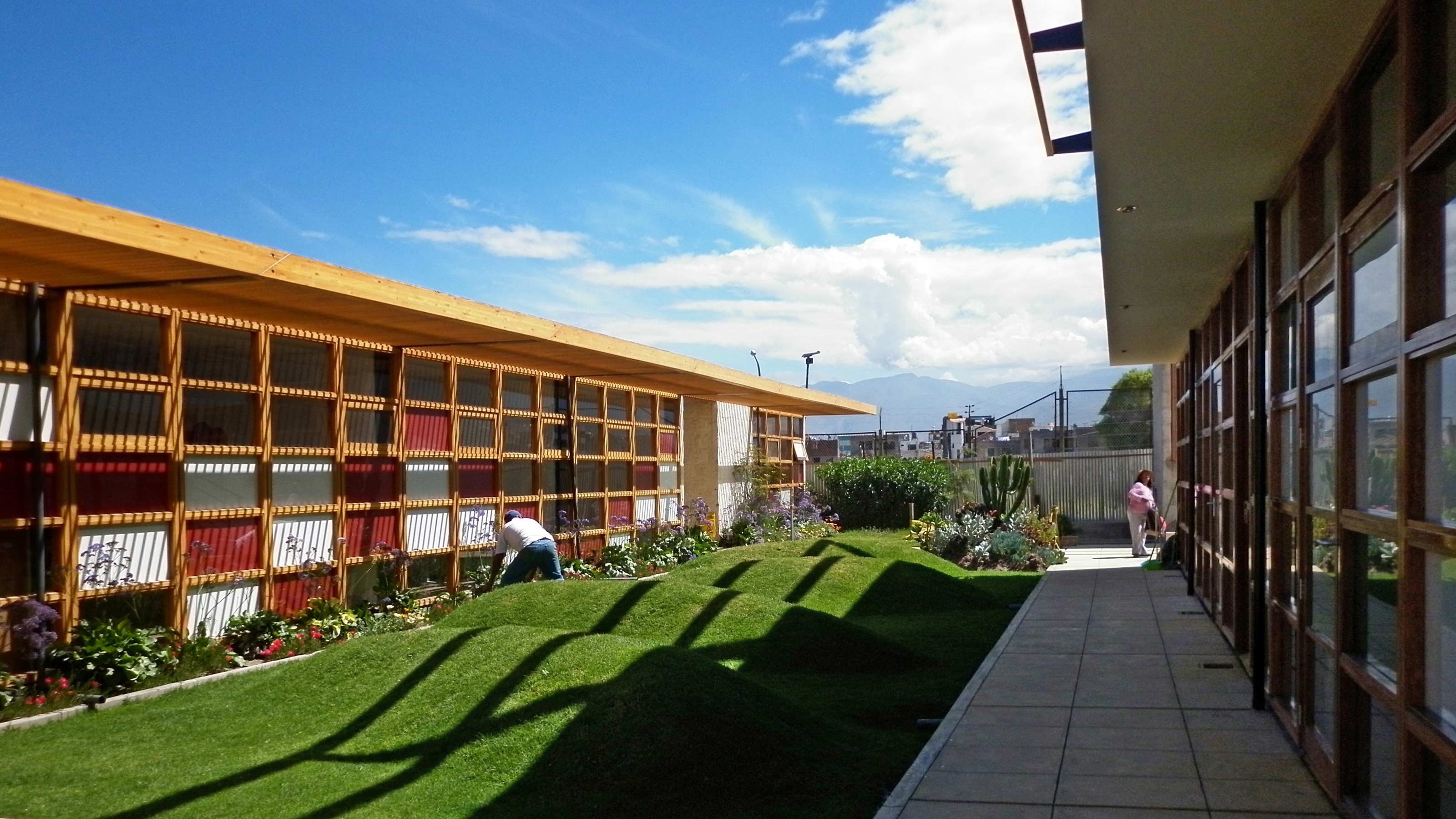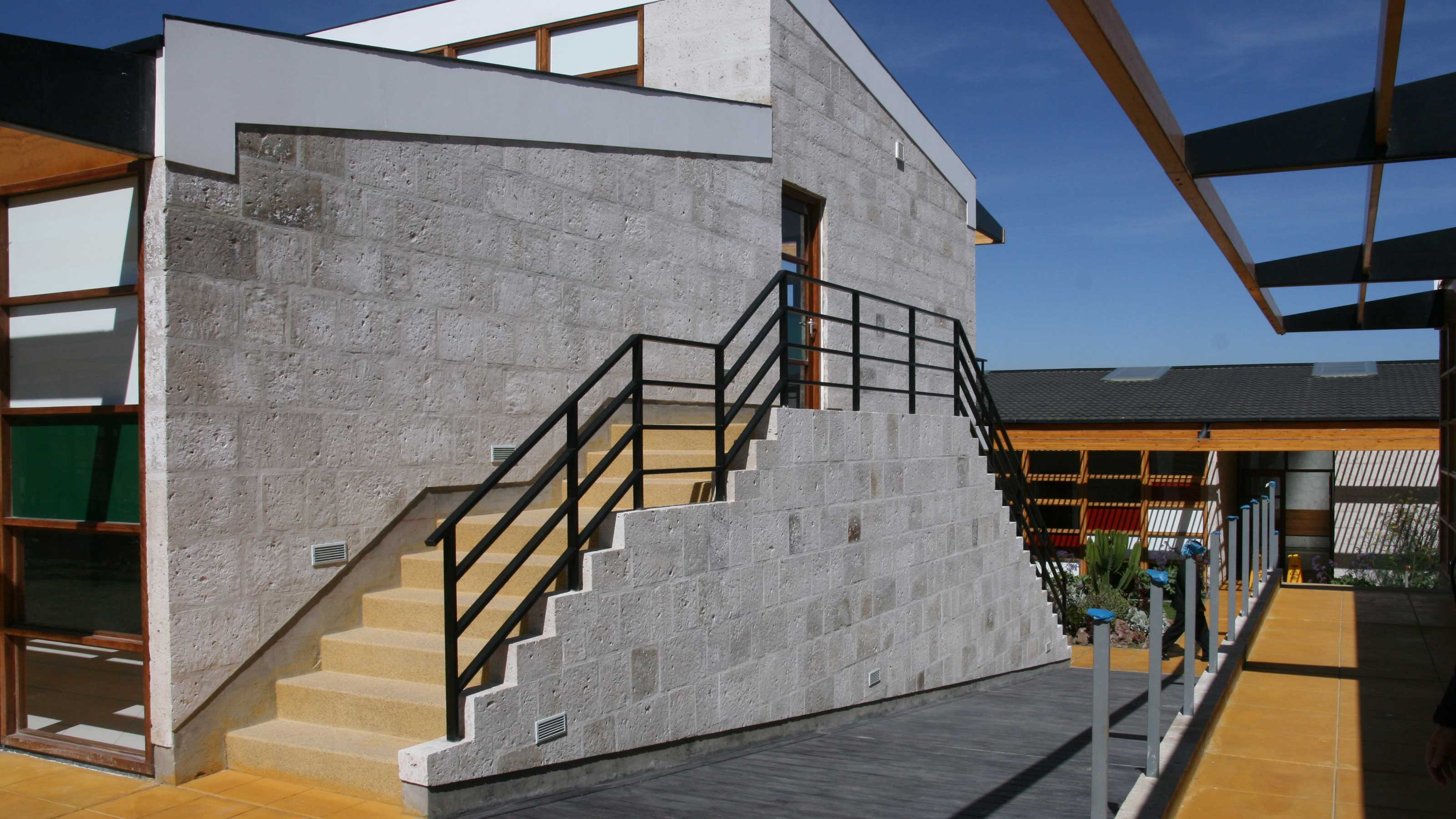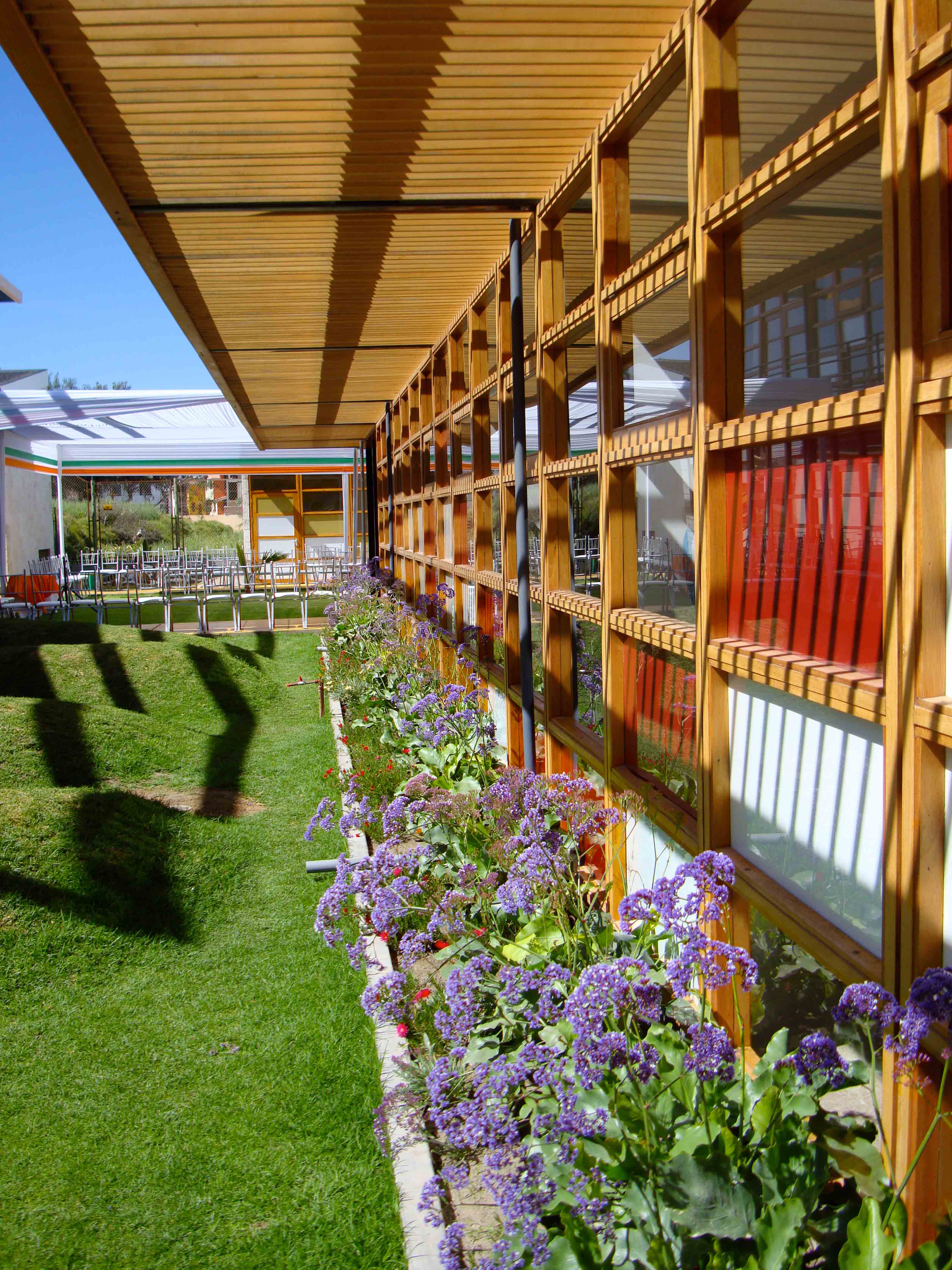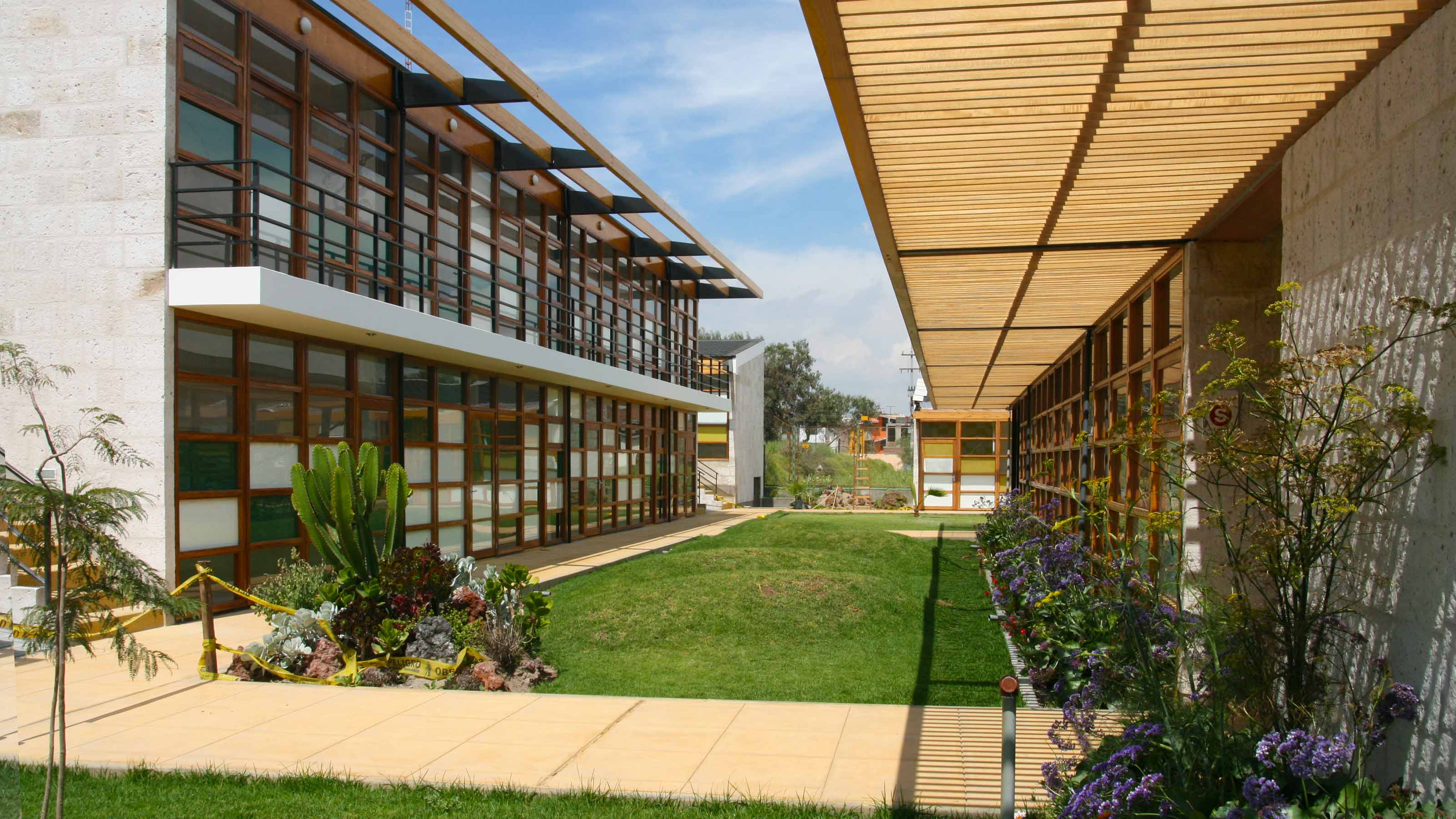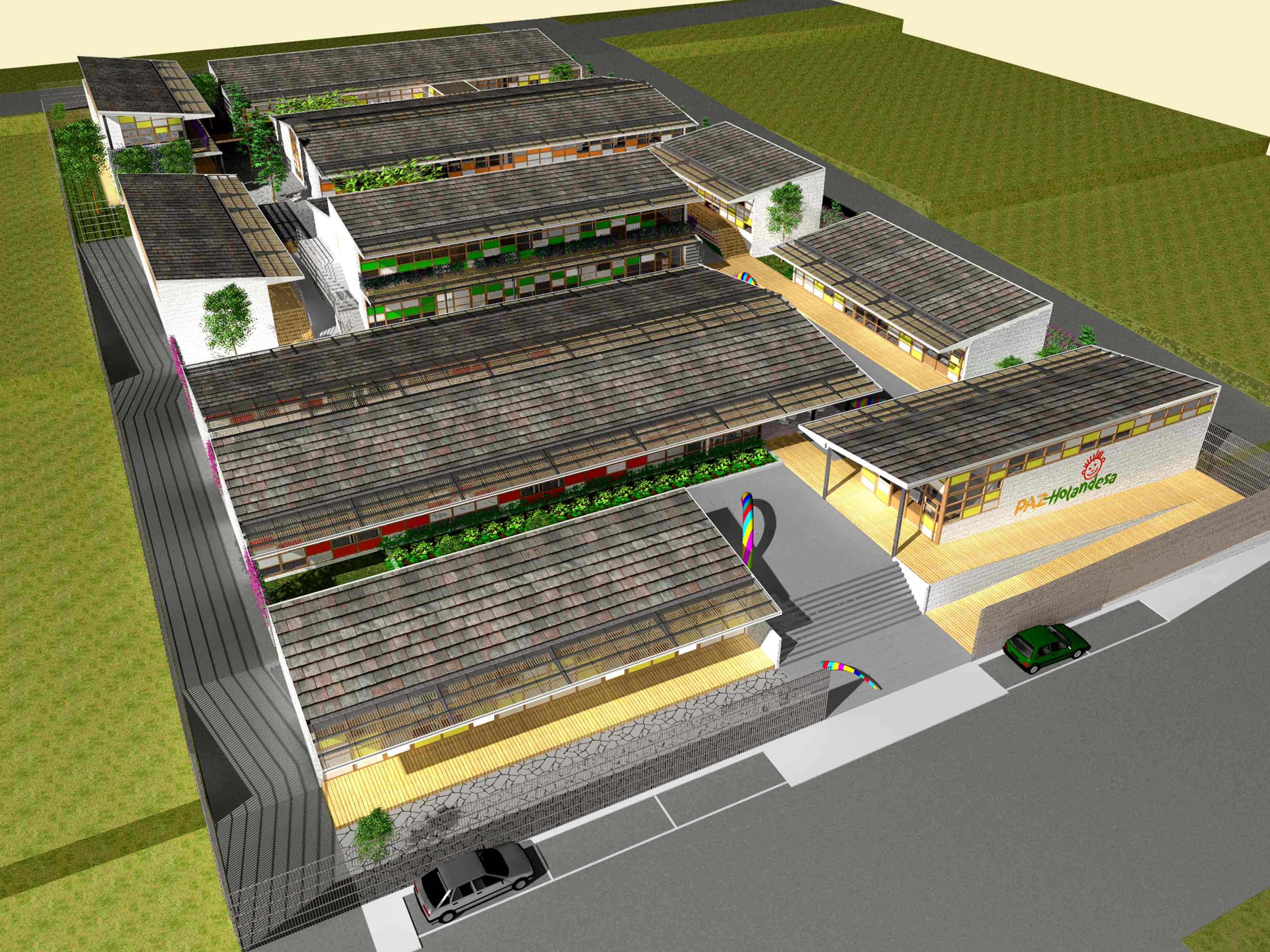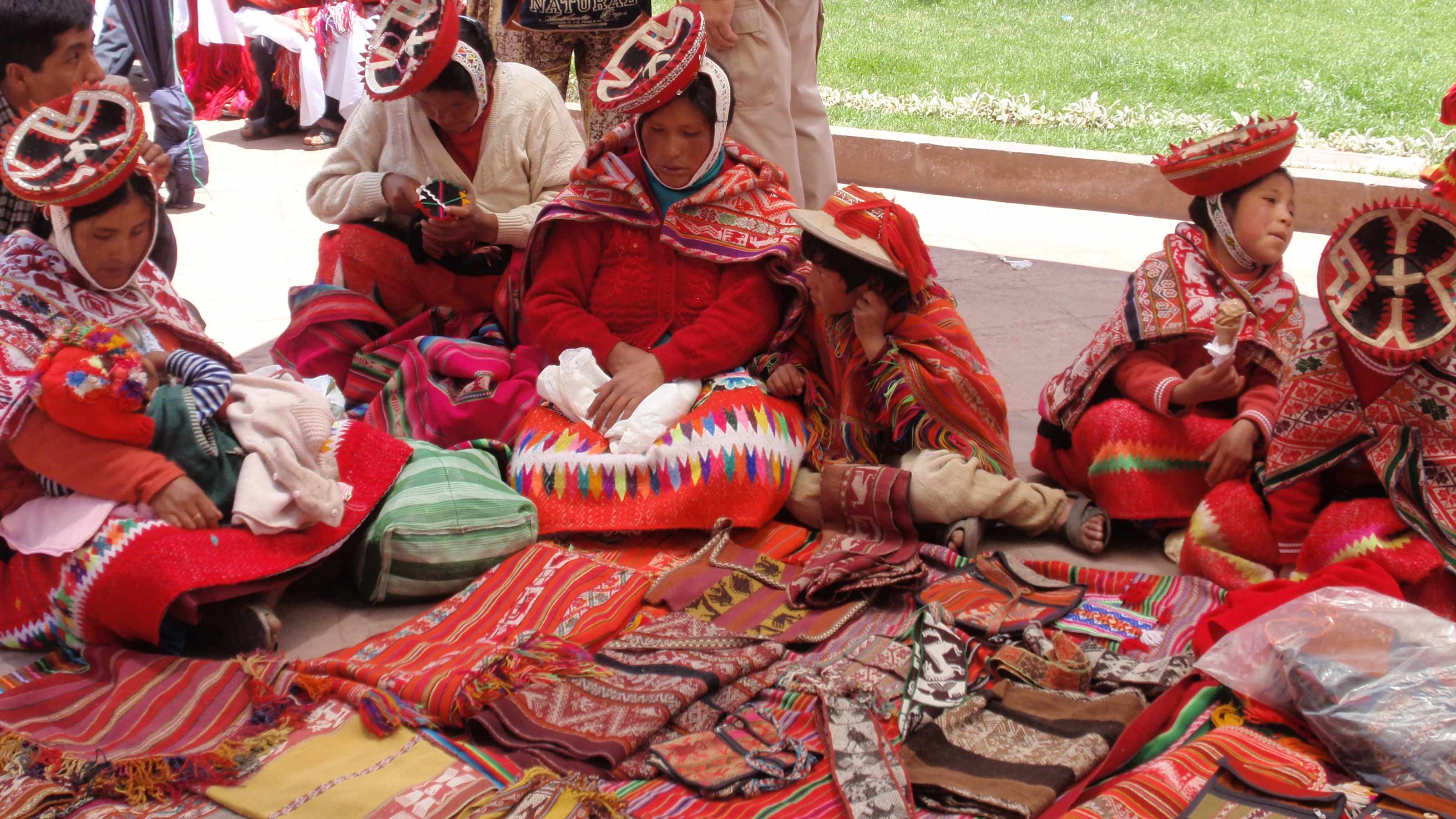
Tony Molleapaza Rojas, Arequipa (Peru)
Children hospital for operations and an important social role
Small-scale full-service hospital that responds to local conditions
A children's hospital where children with birth defects receive free medical help and aftercare. That is what PAZ-Holandesa envisaged for the Tony Molleapaza Children's Hospital in Peru. EGM designed a small-scale, fully equipped hospital that suits the local situation.
The PAZ-Holandesa foundation offers children in Peru with a birth defect, such as acleft lip, cleft palate or club foot, to receive free medical help and aftercare, to prevent these children from becoming isolated. In 2005, EGM architects decided to sponsor the Tony Molleapaza Children's Hospital by providing a design and advice during the construction phase free of charge.
Peru
The children's hospital is located in Arequipa, a city in the Andes at the foot of the El Misti volcano. The hospital has approximately forty beds, operating rooms, an outpatient clinic, an X-ray department, a laboratory, a pharmacy and guest quarters. The hospital also serves as a training institute to enable the local people to eventually take over the full range of tasks from the international medical teams.
Integrated into the environment
The design was to be on a human scale and be in harmony with its environment, taking the climate into account. As a result, the hospital is a combination of small pavilions in which the various facilities are housed. This was primarily due to practical considerations such as the risk of earthquakes, but equally important, the small scale corresponds well with the facilities of the children's hospital. Due to the dry and warm climate, there are outside spaces that act as connections between the pavilions. The existing tiers, formed by previous agricultural terraces, have been integrated into the plans. Local materials have been used, such as white silar stone (volcanic rock from the nearby Misti volcano), local types of wood for the frames and metal for the roofs.
Challenge
The construction of the children's hospital was an enormous challenge due to factors such as distance, bureaucracy, the lack of local (technical) knowledge and the limited financial means. Thanks to the determination of co-founder and director of PAZ-Holandesa Marjan van Mourik, this children's hospital was completed and can serve as an example for other hospitals in Peru.
Pavilions
The design consists of a cluster of small pavilions in which the various functions are placed: forty beds, operating rooms, an outpatient clinic, an X-ray unit, a laboratory, a pharmacy and a guesthouse. On one hand, the pavilion-design is dictated by practical considerations such as earthquake hazards, while on the other hand, the small scale matches well to the functions of the children’s hospital. The existing height differentiations, formed by former agricultural terraces, are integrated into the plan. Local materials such as white solar stone (volcanic stone from the nearby volcano, Misti), wooden frames, metal roofing and stucco were used. This is how a small, colorful, comprehensive children's hospital with state-of-the-art technology came into existence in Arequipa. The hospital was finally able to receive its first patients in 2012.
Awards
Design and Health International Academy Award 2014 - Winner - Best hospital in the world smaller than 40.000 m2
